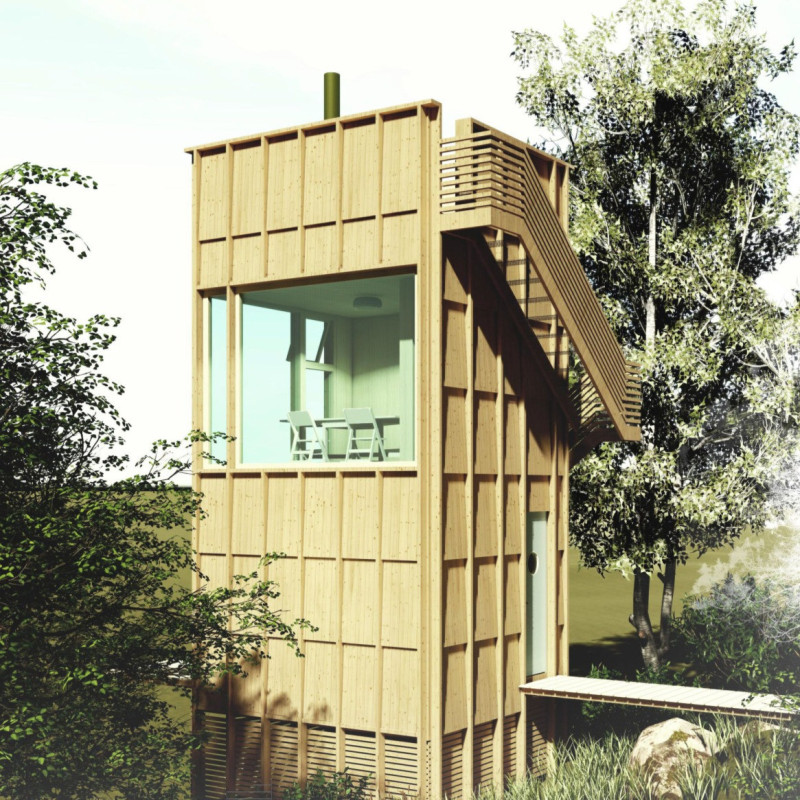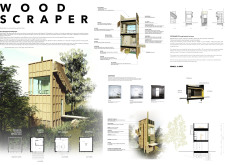5 key facts about this project
The Woodscraper is a compact living solution designed for urban environments, combining function, sustainability, and privacy within a small footprint. This four-story building allows for efficient use of space while promoting a connection to nature. The design focuses on vertical living, providing distinct areas tailored to various activities and enhancing the experience of urban life.
Design Concept
The architecture of the Woodscraper emphasizes vertical stacking of spaces. By concentrating different functions into a limited area, it minimizes land use while ensuring comfort and privacy for its residents. This strategic arrangement promotes a thoughtful coexistence of various living zones, addressing the needs of individuals within a compact layout.
Outdoor Integration
At the top of the structure, a dedicated terrace serves as a versatile outdoor space. This area invites opportunities for relaxation and socialization while offering a unique view of the city. The terrace encourages residents to engage with nature, providing a serene escape from the bustling streets below.
Functional Layout
Inside the Woodscraper, the layout is highly efficient. The kitchen includes essential appliances such as a sink and a portable gas hub that can be hidden away to maintain a tidy appearance. The bathroom features a bio-wc and practical amenities, reflecting a commitment to sustainability. Utility areas located below ground hold a cistern, grey-water tank, and other essential components, thereby preserving the natural landscape while ensuring functionality.
Material Utilization
Materials are essential to the overall design of the Woodscraper. Timber is used as the main structural element, chosen for its durability and sustainable properties. Cellulose insulation, made from recycled paper, enhances energy efficiency and supports an environment that breathes. Plywood is present in ceilings, walls, and shelves, contributing to a cohesive look throughout the interior while promoting usability and comfort.
The design makes effective use of solar panels on south-facing walls, which capture renewable energy. This energy powers built-in lamps that provide efficient indoor lighting. Such thoughtful details enhance the Woodscraper as a clear example of modern urban living carefully balanced with sustainability.



















































